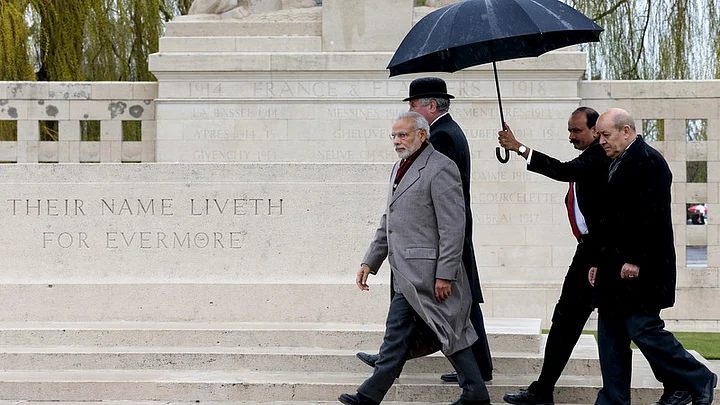A Chinese commentator scornfully, or in praise (it is not clear which), called Narendra Modi “a pragmatist, not a visionary”. Pragmatism in the context of the over-bureaucratized Indian state translates into the Prime Minister being led by his nose by the babus. Defence Minister Manohar Parrikar, whose IIT engineering credentials led many to expect a problem-solver, is proving himself neither a pragmatist nor a visionary, only a ‘please-all’ politician, seemingly approving every military hardware procurement proposal sent his way — the unmet demands of the armed services easily exceed rupees fifteen lakh crore. In the financially straitened circumstances the government finds itself in, the treasury has funds enough for only a few of the goods our uniformed services have indented for. Given the vagaries of the system, no service can be sure it will get what it wants.
Prioritising Expenditures -The Way Ahead
The reasonable way out in this situation is to prioritize expenditure programmes, something apparently beyond Parrikar or, even his boss, Modi (to wit, the latter’s off-the-cuff decision whilst in Paris to buy 36 French Rafale combat aircraft. It will keep the French aviation sector in the clover at the cost of competitive bidding, transfer of technology — to help his own “Make in India” policy, and of choosing the most economical Su-30MKI option that Parrikar, incidentally, was partial to).
The transactions for the US-made C-17 and C-130J airlifters and the P-8I maritime reconnaissance aircraft and for the Rafale fighter showed foreign arms companies and governments how to crack the frustrating puzzle of India’s defence procurement system: approach (earlier Manmohan Singh, now) Modi for multi-billion dollar government-to-government (G2G) contracts.
No problems, no hassles, happy customer, happier suppliers. This method works because, in the absence of a mechanism in the Government of India for inter se prioritization, all defence acquisitions decisions are essentially ad hoc any way, and made by the prime minister and/or finance minister and/or defence minister, using metrics of their choice.
But the G2G route still being an exception, the outcome in terms of actual armaments materializing normally from the procurement pipeline today is no different from when Parrikar’s Congress party predecessor A.K. Antony held court. Antony refused to make any decision attended by the slightest whiff of corruption. Given the nature of the international arms trade and the commission-baksheesh-good times habituated Indian system managers, this was akin to seeking a virgin in a bordello.
So, Antony stayed out of the cat-house, cut no deals and, by the end of his term, had reduced the armed services chiefs to a bunch of blithering hand-wringers. But, in his seven years, at least, he made no howlers.
The Please-all Mr Manohar Parrikar
Parrikar, on the other hand, has proved he is no Solomon. Called on to decide which of two women was mother of a child claimed by both he would probably have cleaved the baby down the middle! That is what he did with the new 17 (Mountain Strike) Corps under raising.
Saying the fund crunch mandated it he halved its strength to 35,000 troops and saved Rs 32,000 crore. It, presumably, is another example of “wise use of money” that he said led to the purchase of only 36 Rafales (as against the requirement of 126 aircraft). For all the good the two Rafale squadrons and the truncated Mountain Corps will do, he might as well trash them both.
What it reveals about Parrikar and the BJP government is that, like Antony and the Congress regime before them, they are not applying their mind, perhaps, because it requires a broader perspective and a threat-reorienting political decision they are fearful of making. China is emerging, finally (whew!), as the consensual main-threat.
Hence, rationally speaking, the army’s three strike corps for the Pakistan front absorbing 17%-22% of the annual defence budget should be rationally reconfigured to one composite armour-mechanized corps for contingencies in the west, with the funds and manpower thus freed up switched to form three offensive mountain corps for operations in Tibet to keep the Chinese forces there honest.
Why is this so difficult for Messrs Modi and Parrikar to understand and act on? As I have been arguing for over two decades, it is not the scarcity of resources but their misuse, owing to a complicit Indian government and military that is the problem.
Time for an Overhaul
The mismatch between resources and requirements will only grow especially in the face of demands by powerful legacy combat arms, such as the plains/desert-limited armoured and mechanized formations, including a massive self-propelled artillery element, that are irrelevant to 21st Century warfare transitioning to network-centred, robotic, remotely-controlled, long range, precision munitions. Then again, the Indian armed forces are pretty antique, as is their thinking and, in that, they are in sync with the government.
(The writer is a Research Professor at the Centre for Policy Research and a national security expert.)
(At The Quint, we question everything. Play an active role in shaping our journalism by becoming a member today.)
